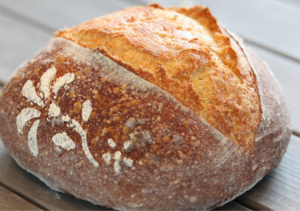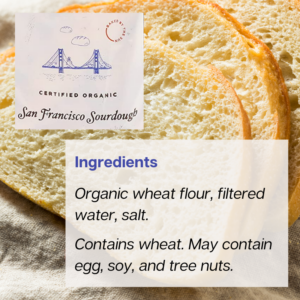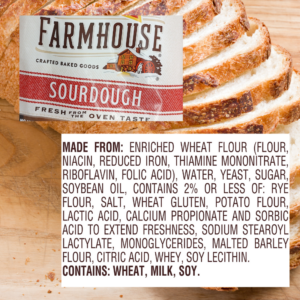 Have you discovered the joy of sourdough bread? For many, baking bread has become a rewarding experience. For others, purchasing sourdough bread, provides a flavorful and healthier bread choice. Some people experience improved digestibility consuming traditionally-fermented sourdough bread compared to other breads. Expand your bread horizons and learn more about the sourdough process.
Have you discovered the joy of sourdough bread? For many, baking bread has become a rewarding experience. For others, purchasing sourdough bread, provides a flavorful and healthier bread choice. Some people experience improved digestibility consuming traditionally-fermented sourdough bread compared to other breads. Expand your bread horizons and learn more about the sourdough process.
What makes it unique from other breads?
While most breads are made using commercial yeast for leavening, traditional sourdough bread is instead made using a culture of wild yeast and bacteria. The yeast (Saccharomyces cerevisiae) and bacteria (Lactobacillus) form a symbiotic relationship in the dough which helps to create many of the unique aspects of this type of bread.
- Traditional sourdough begins with a starter, which consists of flour, water, wild yeast, and bacteria. Through the fermentation process, bacteria produce lactic and acetic acids, giving the dough its distinct sour flavor. This process also contributes to health benefits. Learn more about safely cultivating a starter.
- It is unique because the acids in the dough slow down the digestion of starch when consumed. This also helps slow the rise of blood sugar after eating.

*See disclaimer below - Because of the long fermentation time and enzymatic action associated with sourdough, some people experience improved digestibility.
How to select and purchase

There are many breads labeled ‘sourdough’ but not all are made using a traditional fermentation method. Consider the following to help make a well-informed decision when buying sourdough bread for its potential health benefits:
Look at the ingredients
- True sourdough should only have flour, water, and salt, and may or may not list ‘starter.’
- Many breads labeled as ‘sourdough’ will have a long list of ingredients including yeast, sugar, oil, dough conditioners, mold inhibitors, and an acidic ingredient (such as vinegar, citric acid, or lactic acid) to impart a sour flavor.
Traditional fermentation
 The fermentation process transforms simple ingredients to more readily digestible product.
The fermentation process transforms simple ingredients to more readily digestible product.
- It can improve the digestion of protein
- Decrease starch content
- Improve some mineral and vitamin availability
- Enhances overall taste
* Trade or brand names mentioned/shown are used only for the purpose of information with the understanding that no discrimination is intended and no endorsement by Extension is implied.
Written by Taylor Lane, CSU Graduate Student and Dietetic Intern, Elisa Shackleton and Marisa Bunning, CSU Dept. of Food Science & Human Nutrition.


When is the next sour dough making class? Or regular bread making class?